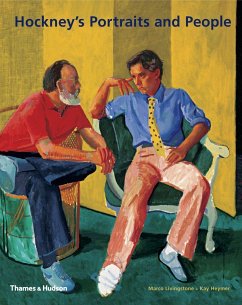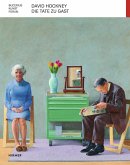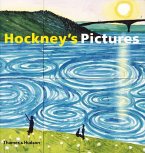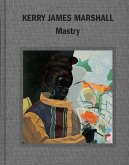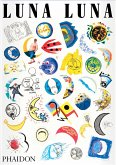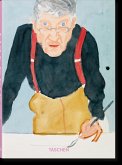An utterly compelling rogues' gallery of the famous, the infamous and the anonymous The Spectator
Attractive and entertaining ... Hockney's gifts (close observation and an elegantly expressive line) have always been evident in his portraits Sunday Times
An elegant framework for an account of a life which is also a study and a celebration of that life's work ... virtually every page turned is another encounter with Hockney's distinctively expressive sense of line and colour Times Literary Supplement
A Thames & Hudson treat Vogue
David Hockney's continuing belief in the importance of the portrait and his virtuoso skill in creating a sense of close communication between artist, sitter and viewer has resulted in some of the best-loved works of the postwar era. From the 1950s on, Hockney's most persistent subject matter, in paintings, drawings, collages and photoworks, has been of people usually very close to him, as well as of himself. These works arenarratives of autobiographical relationships: they reflect the intimate and often intense stories of this artist's life. They also explore different formal ways of representing the passage of time and at the same time the unavoidable but marvellous stillness of portraits. The works include fascinating sequences as he paints his mother or Henry Geldzahler or Celia Birtwell on and off for decades; the special qualities attached to depictions of lovers; and the range of celebrities, writers and artists - Billy Wilder, Armistead Maupin, W.H. Auden, Henry Moore, Christopher Isherwood - who have been part of a very full life. The text by a distinguished European critic and curator reinforces the point that this hugely popular English-born artist, who made America his second home, has become a figure of worldwide appeal.
Attractive and entertaining ... Hockney's gifts (close observation and an elegantly expressive line) have always been evident in his portraits Sunday Times
An elegant framework for an account of a life which is also a study and a celebration of that life's work ... virtually every page turned is another encounter with Hockney's distinctively expressive sense of line and colour Times Literary Supplement
A Thames & Hudson treat Vogue
David Hockney's continuing belief in the importance of the portrait and his virtuoso skill in creating a sense of close communication between artist, sitter and viewer has resulted in some of the best-loved works of the postwar era. From the 1950s on, Hockney's most persistent subject matter, in paintings, drawings, collages and photoworks, has been of people usually very close to him, as well as of himself. These works arenarratives of autobiographical relationships: they reflect the intimate and often intense stories of this artist's life. They also explore different formal ways of representing the passage of time and at the same time the unavoidable but marvellous stillness of portraits. The works include fascinating sequences as he paints his mother or Henry Geldzahler or Celia Birtwell on and off for decades; the special qualities attached to depictions of lovers; and the range of celebrities, writers and artists - Billy Wilder, Armistead Maupin, W.H. Auden, Henry Moore, Christopher Isherwood - who have been part of a very full life. The text by a distinguished European critic and curator reinforces the point that this hugely popular English-born artist, who made America his second home, has become a figure of worldwide appeal.

